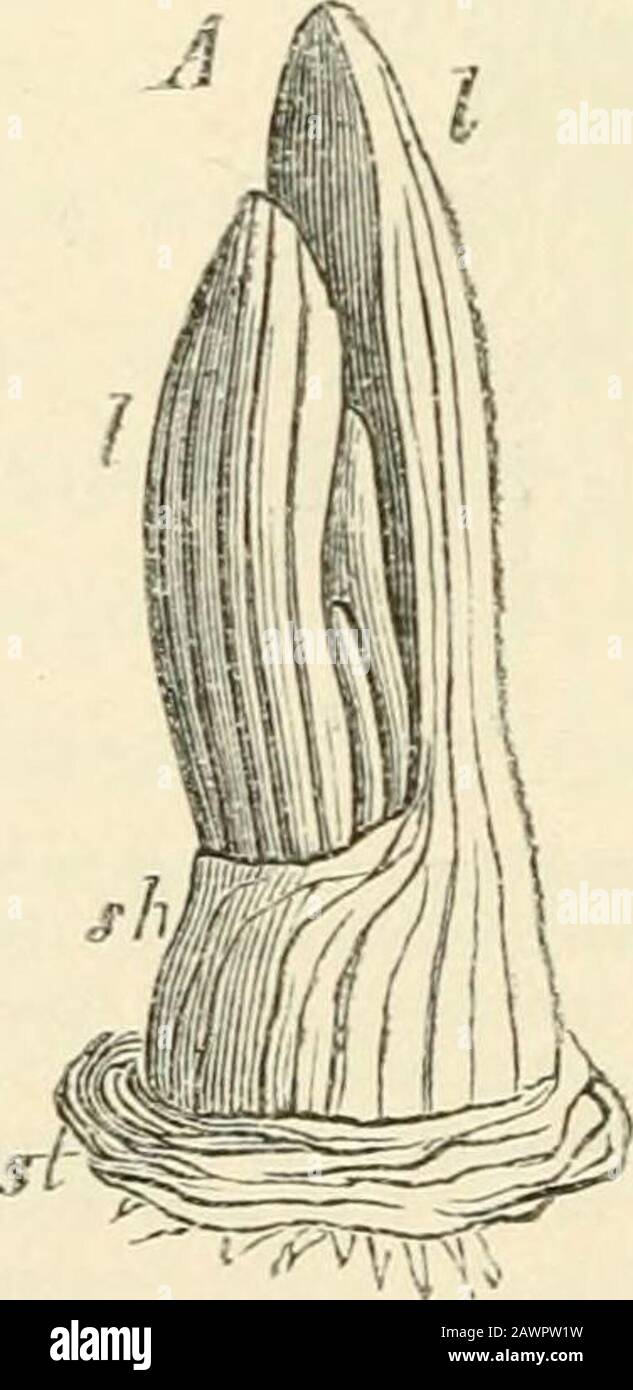Text-book of botany, morphological and physiological . ?vermes: A the bulbous stem seen from above, B seen from below, C from the side and cutthroujjh lengthwise ; fff the circular line of scars of the cataphyllary leaves, k k the corms which t,frow in their axils ;b the base of the decayed flower- and leaf-stem, by its side (lik in Q next years bud, from which a new corm andflower-stem will be produced; D longitudinal section through this bud, n « its cataphyllary leaves, // foliage-leaves,h bract, / perianth, a anthers, k a bud in the axil of a foliage-leaf. pale. When the phyllotaxis of suc

Image details
Contributor:
The Reading Room / Alamy Stock PhotoImage ID:
2AWPW1WFile size:
7.1 MB (212.8 KB Compressed download)Releases:
Model - no | Property - noDo I need a release?Dimensions:
1103 x 2265 px | 18.7 x 38.4 cm | 7.4 x 15.1 inches | 150dpiMore information:
This image is a public domain image, which means either that copyright has expired in the image or the copyright holder has waived their copyright. Alamy charges you a fee for access to the high resolution copy of the image.
This image could have imperfections as it’s either historical or reportage.
Text-book of botany, morphological and physiological . ?vermes: A the bulbous stem seen from above, B seen from below, C from the side and cutthroujjh lengthwise ; fff the circular line of scars of the cataphyllary leaves, k k the corms which t, frow in their axils ;b the base of the decayed flower- and leaf-stem, by its side (lik in Q next years bud, from which a new corm andflower-stem will be produced; D longitudinal section through this bud, n « its cataphyllary leaves, // foliage-leaves, h bract, / perianth, a anthers, k a bud in the axil of a foliage-leaf. pale. When the phyllotaxis of successive orders of shoots is alternate in two rows, the result of this arrangement is that a whole system of shoots is bilateral, or maybe divided by a plane which bisects the leaves (as in Potamogeton, Typha, &c.). The mode of insertion of the cataphyllary and foliage-leaves, and veryoften that of the hypsophyllary leaves (as for instance that of the spathe whichis of common occurrence) is generally entirely or for the greater part amplexicaul, .